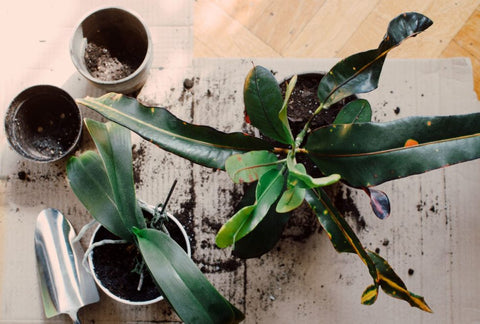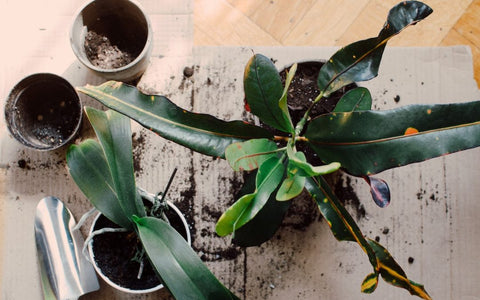And is it Essential for a Successful Garden?
At Urban Leaf, we often talk about seeds, germination, and growing seedlings, but what about the basics—like soil? Having great soil is the foundation of a successful garden. While we tend to focus on seeds and harvest, we turned to Bre, aka @plantgirl_50, for expert advice on soil. Bre is passionate about botany, horticulture, and mycology, and we learned so much from chatting with her. Ready to dig in? Let’s get started!

What IS Soil Amending Anyway?
If the term “amending soil” is new to you, don't worry! It’s just a fancy way of saying you’re adding or changing your soil to make it more suitable for growing plants. Soil amendments can be organic or inorganic and are added to garden soil or potting media. Potting media, as Bre explains, is the mix of ingredients used in containers, while soil is the top layer of the earth, or “garden soil.”
Amending soil helps correct porosity, drainage, pH levels, or texture. Bre shares more about soil amendments on her YouTube Soil Series.
When Should I Improve My Garden Soil With Amendments?
It’s tempting to assume that store-bought soil has everything your plants need, but over time, the nutrients will deplete. Spring or summer is a great time to repot your plants and add amendments, but you can do so anytime you’re planting, replanting, or repotting. If your plant is struggling (and pests aren’t the cause), soil amendments can make a big difference. Keep in mind that different plants require different soil conditions.
Do I Need Any Tools for My Soil Amendments?
All you really need is your hands! But Bre mentions a few tools can make the process easier—like a shovel and rake for larger garden beds. For indoor plants, a hand shovel or scoop works well for mixing the potting media. However, using your hands to mix the soil can be fun (and a great de-stressor too).
Understand Your Soil
What Is Soil pH?
Soil pH plays a crucial role in plant health, affecting nutrient availability and soil structure. For most vegetable gardens, the optimal pH is around 6.5. If you're unsure of your soil’s pH, consider using a soil test kit. If your soil has imbalances, you can amend it to create the perfect environment for your plants. Learn more about pH from this guide.
What Is Soil Texture?
Good soil texture ensures proper aeration and drainage, essential for healthy roots. Bre recommends light, chunky soil for indoor plants and rich soil with good drainage for outdoor gardening. Roots need oxygen, so compact soil can suffocate them. Aeration and drainage are crucial for success, especially in indoor gardens where natural elements like rain and wind are absent.

Which Organic Matter Is Best For Your Soil?
Manure (Animal-Based Amendment)
If you have access to livestock manure, it makes an excellent slow-release fertilizer for outdoor plants. It’s packed with nutrients and conditions the soil, but avoid using manure from dogs or cats—this is not suitable for gardening.
Worm Compost (Animal-Based Amendment)
Bre’s personal favorite! Worm compost supplies nutrients, repels pests, and prevents diseases. It’s a powerful amendment for any garden.
Plant Compost (Plant-Based Amendment)
Composting food scraps and yard waste creates a slow-release fertilizer that’s great for your garden. Make sure your compost is fully decomposed before adding it to avoid competing with your plants for nutrients. Compost is an easy and inexpensive way to enrich your soil.
Learn more about essential plant nutrients and the best types of fertilizers from our blog on fertilizers.
Indoor Gardening
Soil amending is not just for outdoor gardens—you can (and should) amend your indoor potting mix as well. Bre recommends always adding something for drainage and aeration, such as perlite, pumice, orchid bark, or coco husk. These additions help prevent overwatering, the most common cause of death for houseplants.

Green Thumbs For All
When it comes to gardening, have fun, experiment, and trust your instincts. Start small—don’t feel like you need every soil amendment at once. Bre’s advice? There’s no such thing as a “green thumb,” only a “dirty one!” Gardening is a learning process, and every experience teaches you something new.
Join our community for more tips and inspiration, and don’t forget to follow Bre for more plant wisdom!

“I used to tell my mom, ‘I wish I had your green thumb,’ and she would always say, ‘There’s no such thing as a green thumb, only a dirty one!’ Looking back, I see how true that is.”






